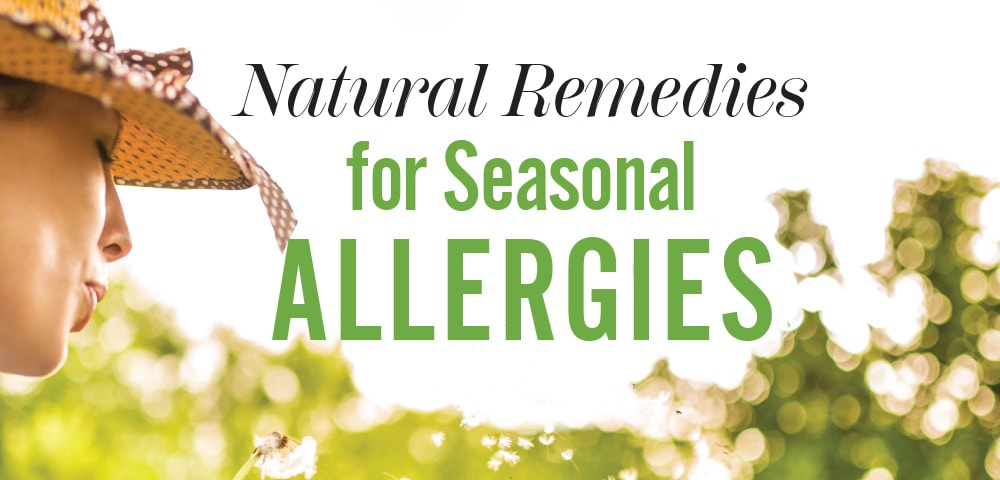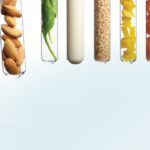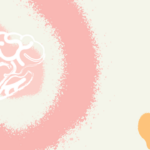
Goodbye winter, hello spring! After a lengthy winter, there’s great excitement for longer days, warmer weather, and blooming flowers. Yet, this time of year can be troubling for seasonal allergy sufferers.
Unfortunately, with the increase of allergic conditions over the last 70 years in high-income countries, their occurrence is now a worldwide public concern. Genetic changes, environmental exposure, and nutritional changes in food may all be contributing factors to this rising trend. Thankfully there are complementary solutions to help manage symptoms, support immune function, and stabilize mast cells to reduce histamine release, so we can all enjoy the beautiful spring days.
Quercetin
Found in many plant foods such as capers, apples, berries, onions, and grapes, quercetin is a bioflavonoid that offers a wide range of health benefits. Quercetin is a potent antioxidant that works with vitamin C to protect tissues from free radical damage and reduce inflammatory compounds. When it comes to allergies, research has shown quercetin can stabilize mast cells, reduce histamine release, decrease pro-inflammatory markers, inhibit specific enzymes, and modulate the immune system. These actions can lead to reduced inflammation, as well as seasonal allergy relief. In addition to consuming the mentioned quercetin-rich foods, look for highly absorbable quercetin supplements that overcome quercetin’s limited bioavailability. For example, LipoMicel technology uses a unique micelle delivery system to provide a form of quercetin that has up to 10 times higher absorption than standard forms. Recommendations for standard forms of quercetin range from 500–1000 mg per day.
Horseradish
Many might think of horseradish as simply a pungent spice that goes nicely with meat and fish, however horseradish has also been recognized for its medicinal actions. The characteristic flavor and aroma of horseradish is due to it being rich in the compound known as glucosinolates. Horseradish also contains enzymes and nutrients such as calcium, magnesium, vitamins C and A, and the flavonoids, kaempferol and quercetin. As far as allergy support is concerned, horseradish appears to soothe irritated airways, maintain blood circulation, and open the sinus cavities. Horseradish has also been shown to have anti-inflammatory actions by reducing the production of pro-inflammatory compounds, as well as antioxidant and antimicrobial effects. Freshly grated horseradish root can be added to salads and vegetable or chicken broth.
Probiotics
It is estimated that 70–80% of the immune system is located in the gut, so it stands to reason that an imbalance of gut bacteria can impact immune system function. Gut bacteria can be supported with probiotics and may be a key factor to supporting allergies. Research has shown that probiotics modulate immune responses in allergic rhinitis and may have the potential to alleviate the severity of allergy symptoms. In a review of 23 randomized trials, researchers found that those who took either a probiotic supplement or consumed foods rich in probiotics had improved allergy symptoms and overall quality of life. Additional research has shown combinations of common probiotic strains can improve quality of life during allergy season. Support your gut bacteria by incorporating fermented foods such as sauerkraut, miso, kefir, yogurt, and kimchi into your diet as they, along with standardized probiotic supplements, provide high amounts of good bacteria.
Bee Pollen
Bee pollen for allergies? That’s right! Bee pollen is very nutritious, providing nutrients such as protein, vitamins, minerals, enzymes, and fatty acids. Bee pollen has been used for centuries to address various conditions, including seasonal allergies. Worker honeybees collect flower pollen, which is packed into small pellets with nectar, enzymes, bee saliva, and wax. Although consumption of bee pollen can be beneficial for health, there is still much to learn about the use of bee pollen in humans. However, one study showed that mice who were fed bee pollen had reduced binding of IgE to mast cells, explaining its anti-allergic actions. Please note that individuals allergic to bee stings should avoid the use of bee pollen.
Along with the inclusion of natural health products, consider these other approaches to support the body and reduce allergy symptoms this long-awaited spring.
- Consume a traditional Mediterranean diet, high in fish, fruits, vegetables, and nuts.
- Practice nasal irrigation with saline (salty water) such as with a Neti pot to help clear out mucus.
- Place a HEPA air purifier in your bedroom or any other area of your home, and regularly wash or replace air conditioner and furnace filters.
- Keep all doors and windows closed as much as possible.
- Clean your home regularly ensuring to regularly wipe all surfaces, vacuum floors, and wash bedding.
- Leave your shoes outside and change your clothes after being outdoors. Consider a shower before bed to remove pollen collection on skin and hair.
- Stay inside when pollen counts are high.












